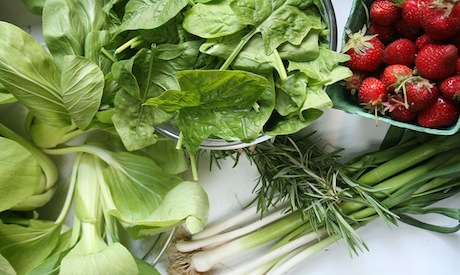
If we know anything about our modern food options, it's that they've come a long way from our primitive selections. Farming and technology has allowed us to breed for flavor, texture and color in plants and animals. And although that strawberry may taste incredibly sweet and juicy, it may not be the best choice for our health.
A New York Times article dived into the issue of plant breeding and just how much we've lost from our diet as a result. "Studies published within the past 15 years show that much of our produce is relatively low in phytonutrients, which are the compounds with the potential to reduce the risk of four of our modern scourges: cancer, cardiovascular disease, diabetes and dementia," writes Jo Robinson.
Read more about phytonutrients
These studies have been able to look at the phytonutrient contents of both wild foods and what we eat more commonly. For example, wild dandelion greens, says Robinson, "have seven times more phytonutrients than spinach, which we consider a 'superfood.'"
What's been consistent over the centuries is the breeding out of sour or bitter flavors and compounds, and focusing more on the sweeter, more pleasant tasting attributes of plants. "The more palatable our fruits and vegetables became, however, the less advantageous they were for our health," says Robinson.
Health expert Daniel Vitalis has also been outspoken on the issue of "rewilding" our diets. He encourages reintroducing some of the more bitter and true-to-nature foods that contain higher levels of nutrients than modern examples. But that can be easier said than done.
With so many foods bred for flavor, how can you find superior, nutrient-dense offerings at the market? Robinsons suggests a few steps, such as using red, blue or purple cornmeal instead of the more common yellow variety. The leafy green, arugula, retains many similarities to its wild predecessors. It's full of flavor and can be added to lettuce mixes or eaten on its own. Many herbs, too, contain phytonutrients on par with ancestors. Move parsley from garnish to center stage and taste the benefits.
"We can’t increase the health benefits of our produce if we don’t know which nutrients it contains," writes Robinson. "Ultimately, we need more than an admonition to eat a greater quantity of fruits and vegetables: we need more fruits and vegetables that have the nutrients we require for optimum health."
Read more about leafy green vegetables
Image: thebittenword




